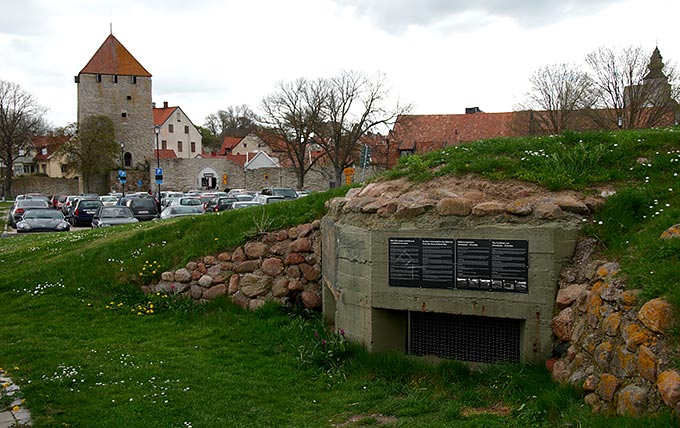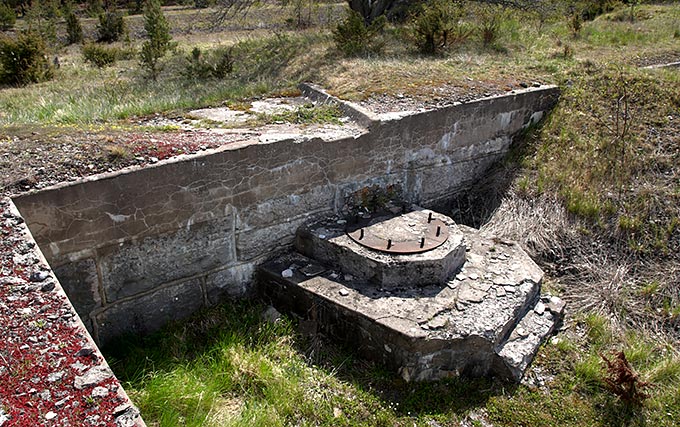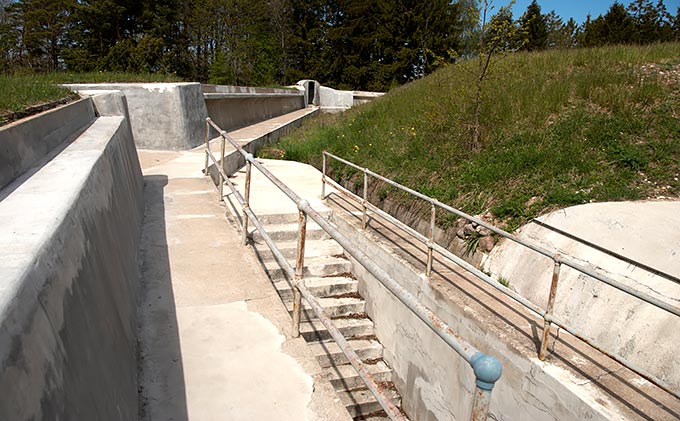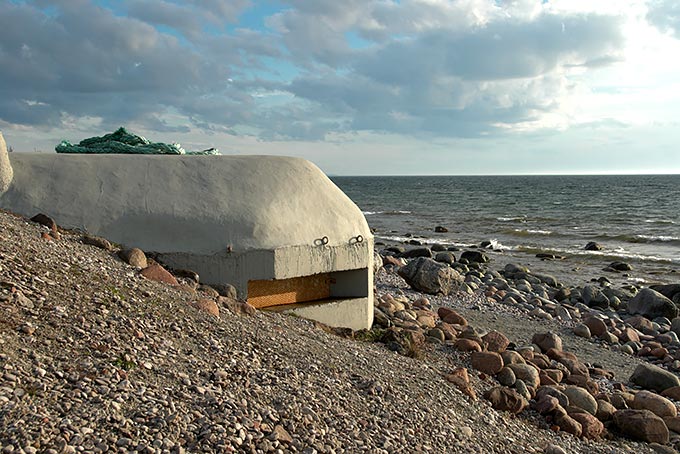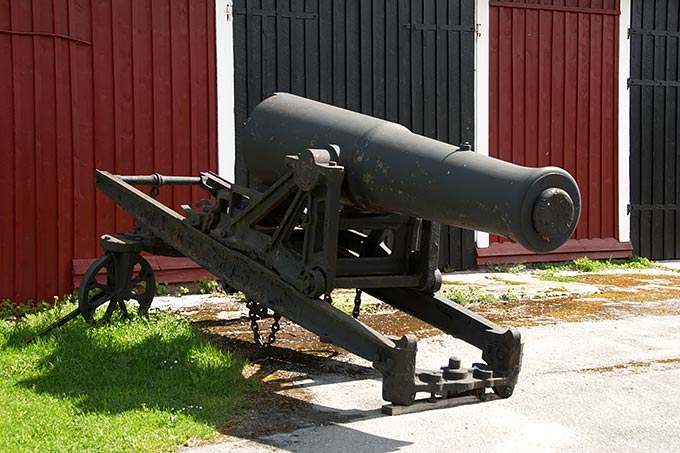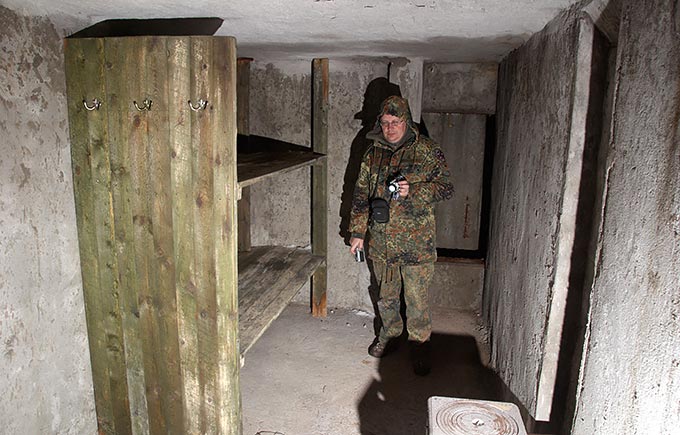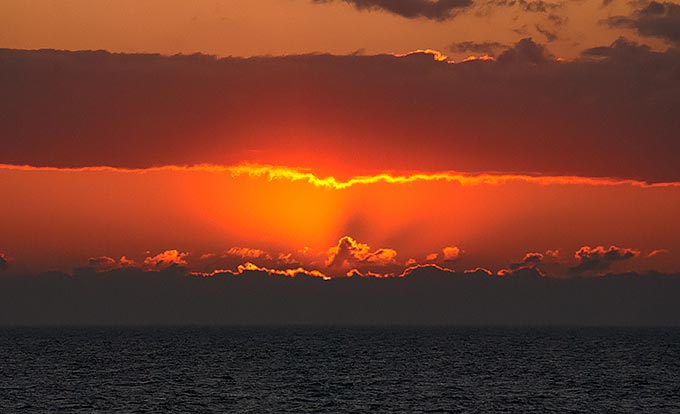Fortifications of Gotland
"Land skall med lag byggas" (Country shall be built with law) and i.e. shall be well defended - that was a saying of the good Swedish kings in the old days. If so, the borders must be strengthened, and the country should be ready for every kind of troubles. Especially, if nearest neighbor has a chronic Hemorrhoids about it's seacoast exits or about building true socialism in a one single country.
All abovementioned is true especially if you owe such land as Gotland island with its deposition right in the middle of Baltic Sea. Because that there are pretty much fortified installations at the Gotland as in all Sweden. They are related to different times and epochs. Torsburgen is a prehistoric installation for example. It's building begun near 200 BC. Visby town with its towers and walls was founded in 13 AD. Enholmen fort is a sample of early 19th century fortifications and the batteries of Farosund related to late 19th century.
In this section, some aspects of recent time Gotland's fortifications will be discussed.
Let's start with Farozund. Farozund is the strait between Gotland and Faro island. It was an ideal harbour for large fleet, here in 1860-1870 years several large permanent artillery forts were erected. 3-d coastal artillery regiment marks its present here from that times.
In the same tames in north of Gotland island big supply military base was organized near to Tingstadt settlement. Barracks and warehouses territory was surrounded by permanent concrete installations such as infantry strong points, artillery batteries, shelters, etc. Sweden did not participate in World War I
The next stage of fortification on Gotland started in anticipation of a new world war in 1939. Swedes have begun construction of numerous machine-gun and artillery bunkers of antilanding defense alongside the coastline and in airborne troops places. Few hundred bunkers were built before 1945. They were designed endure of multiple hits of 150 mm shells and 100 kg. airbombs, armed with machine guns and anti-tank cannons up to 84 mm. caliber. Tunnel shelter were carved into the rocks for command posts and ammunition depots. Some of these shelters can accommodate up to 700 men.
Special specialized construction teams of excavators, concrete workers, carpenters, installers of equipment moved from one construction site to another and made their work. One team could serve two bunkers within one working day. There was a some fortification construction conveyor. 1000 installations were made in 1940 including 355 machinegun bunkers. The garrison consisted of 11 separate artillery and machine-gun companies, include units of support base in Tingstad. The total cost of construction works was more than 470 000 SEC.
After WWII Gotland's fortifications construction was continued. Moreover, the entire northern part of the island of Gotland became the forbidden area for all foreigners. In 1957 and 1959 artillery units were rearmed, new bunkers with tank turrets appeared, and new turret guns were installed. New installations could endure fighting in the use of nuclear and chemical weapons, they had filter and airing systems and sealed gateways at their entrances. Last modernization of Gotland bunkers was early 1980s and then, with the disappearance of a potential enemy Soviet Union all these fortifications became needless.
Expected events have been there after that. In 1990 Sweden military got armament and all other valuable equipment from installations and transferred property to Fortifikationsverket (Fortification Committee), local municipalities and councils, private owners. Most of bunkers are abandoned and deserted now, some are used as sheds and warehouses, small portion used by the military still. Many installations sealed by concrete or demolished. According to the Swedish press 653 bunkers were destroyed at Gotland till 2004 by Fortifikationsverket. They said it was made for prehistorical sight of the terrain restore... But some installations are converted to museums and available for the cultural visitor.
Some impressions
Gotland and Faro nature is beautiful and unforgettable!
Visby fortress and town are splendid! It will be need to make separate section about it...
But it’s still good in Sweden! These are my impressions...
... you’re walking along the shore with a bottle in your hands, drank and soft, and suddenly you find one pillbox, a second pillbox, a third... And you don’t need a Military General Staff map, GPS or any official information obtained through from semi underground sources.
...the concrete of the First World War combined with the deserted shores of Farosund is especially impressive. It is also interesting to look at an example of modern recycling of concrete ruins in to the form of a modern conference-hotel.
...there are guns here, everywhere, and some are in combat-ready condition. Although a lot has been scrapped, but a lot has been preserved for future generations.
...and it’s simply impossible to express the local Gotlandic nature in common words!..
...but in general, it’s still good in Sweden, despite the capitalist system is in the country! If, of course, you don’t violate the low. It’s not for nothing that they say: “Land skall med lag byggas”..
Land forts and fortress:
Bip Castle Gatchina Ivangorod Izborsk Kexholm Kirillov Monastery Koporye Novgorod Pechorskiy Monastery Peter&Paul Fortress Porkhov Pskov Schlisselburg Staraya Ladoga Tikhvin Vyborg Hameenlinna Hamina Kastelholm Kymenlinna Lappaenranta Raseborg Castle Savonlinna Tavetti Turku Visby Fredrikstadt Fredriksten Hegra Fort Hoytorp Fort Arensburg Narva Tallinn Antipatris Caesarea Jerusalem Latrun Fort Masada
Sea forts and fortresses:
Alexander Fort Ino Fort Krasnaya Gorka Fort Kronstadt: Kotlin isl. Kronstadt: North Forts Kronstadt: South Forts Trongsund Hanko Svartholm Sveaborg Marstrand Siaro Fort Vaxholm Oscarsborg
Artillery batteries and individual guns:
Coastal Artillery Hemso Fort
Fortified areas and defensive lines:
Karelian Fortified Area (KaUR) KrUR Leningrad Mannerheim Line Nevsky Bridgehead VT Line Harparskog Line Salpa Line Gothland
Russian
S e a r c h All news

